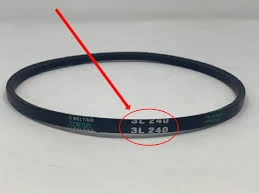- Arabic
- French
- Russian
- Spanish
- Portuguese
- Turkish
- Armenian
- English
- Albanian
- Amharic
- Azerbaijani
- Basque
- Belarusian
- Bengali
- Bosnian
- Bulgarian
- Catalan
- Cebuano
- Corsican
- Croatian
- Czech
- Danish
- Dutch
- Afrikaans
- Esperanto
- Estonian
- Finnish
- Frisian
- Galician
- Georgian
- German
- Greek
- Gujarati
- Haitian Creole
- hausa
- hawaiian
- Hebrew
- Hindi
- Miao
- Hungarian
- Icelandic
- igbo
- Indonesian
- irish
- Italian
- Japanese
- Javanese
- Kannada
- kazakh
- Khmer
- Rwandese
- Korean
- Kurdish
- Kyrgyz
- Lao
- Latin
- Latvian
- Lithuanian
- Luxembourgish
- Macedonian
- Malgashi
- Malay
- Malayalam
- Maltese
- Maori
- Marathi
- Mongolian
- Myanmar
- Nepali
- Norwegian
- Norwegian
- Occitan
- Pashto
- Persian
- Polish
- Punjabi
- Romanian
- Samoan
- Scottish Gaelic
- Serbian
- Sesotho
- Shona
- Sindhi
- Sinhala
- Slovak
- Slovenian
- Somali
- Sundanese
- Swahili
- Swedish
- Tagalog
- Tajik
- Tamil
- Tatar
- Telugu
- Thai
- Turkmen
- Ukrainian
- Urdu
- Uighur
- Uzbek
- Vietnamese
- Welsh
- Bantu
- Yiddish
- Yoruba
- Zulu
Nov . 02, 2024 06:20 Back to list
flat transmission belt
The Importance of Flat Transmission Belts in Mechanical Systems
Flat transmission belts play a crucial role in the mechanical world, serving as vital components in various industrial applications. These belts are designed to transfer power between rotating shafts while maintaining a flat profile, which maximizes efficiency and reduces wear and tear over time. Understanding the significance of flat transmission belts helps us appreciate their contribution to modern machinery and equipment.
Flat belts are typically made from durable materials such as rubber, fabric, or synthetic composites, ensuring a strong grip and sustained performance under various operating conditions. Their primary function is to transmit power from a driving pulley to a driven pulley, often in situations where distances between components are significant or where the alignment of the shafts is critical.
One of the key advantages of flat transmission belts is their ability to handle high-speed operations. In applications such as textile manufacturing, automotive production, and material handling, these belts can efficiently transmit power at high RPMs without slipping. This capability is essential for maintaining performance and achieving productivity targets in fast-paced industrial environments.
flat transmission belt

Moreover, flat belts are known for their versatility. They can be used in a wide range of applications, from conveyor systems and fan drives to agricultural machinery and woodworking equipment. This adaptability makes them a favorite choice for various industries, as they can be customized to meet specific operational requirements, such as length, width, and thickness.
Another significant benefit of flat transmission belts is their low maintenance requirements. Unlike some other types of power transmission systems, flat belts do not require extensive lubrication or regular adjustments. This characteristic not only reduces operational costs but also minimizes downtime, allowing companies to focus on their core activities.
However, proper installation and tensioning of flat transmission belts are crucial for optimal performance. If a belt is too loose, it may slip or wear prematurely; if it's too tight, it can lead to excessive strain on the pulleys and bearings, potentially causing failure. Therefore, manufacturers and operators must pay close attention to the installation process and routinely inspect the belts for signs of wear or damage.
In conclusion, flat transmission belts are indispensable for the effective functioning of many mechanical systems. Their ability to transmit power efficiently at high speeds while requiring minimal maintenance makes them a popular choice across various industries. As technology continues to evolve, so does the design and material composition of flat transmission belts, ensuring they remain relevant in an ever-changing mechanical landscape. Understanding their importance is essential not only for engineers and operators but also for anyone involved in the fields of manufacturing and machinery design.
-
Korean Auto Parts Timing Belt 24312-37500 For Hyundai/Kia
NewsMar.07,2025
-
7PK2300 90916-T2024 RIBBED BELT POLY V BELT PK BELT
NewsMar.07,2025
-
Chinese Auto Belt Factory 310-2M-22 For BMW/Mercedes-Benz
NewsMar.07,2025
-
Chinese Auto Belt Factory 310-2M-22 For BMW/Mercedes-Benz
NewsMar.07,2025
-
90916-02660 PK Belt 6PK1680 For Toyota
NewsMar.07,2025
-
drive belt serpentine belt
NewsMar.07,2025

